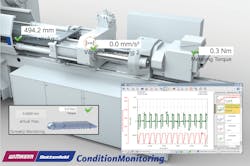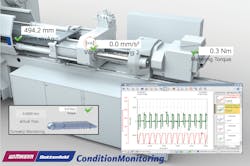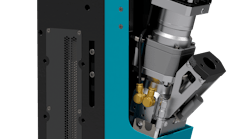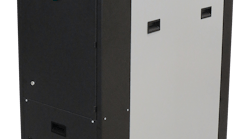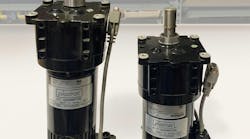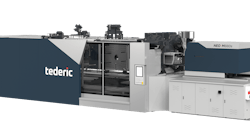Recent progress in sensor technology and the increasing availability of high-speed data networks have allowed Wittmann Battenfeld to offer conditioning monitoring systems (CMS) as an option on its injection molding machines. Similar systems have been used for many years in other industries to monitor expensive equipment.
The cost of unplanned repairs and the loss of profit caused by machine breakdowns are generally higher than the costs of a CMS, according to David Sharp, U.S. operations manager for injection molding machines for Wittmann Battenfeld. This is especially true for machines linked to a just-in-time supply chain for the automotive industry.
Wittmann Battenfeld introduced a CMS as optional equipment at K2016. It was first shown last year in North America at NPE. There are now three injection molders in Canada using CMS and some larger projects underway in the U.S., Sharp said. More than 50 injection molders worldwide are using CMS, including more than 30 in Europe and more than 10 in Asia.
The CMS monitors:
• in servo-hydraulic machines, the drive function of the hydraulic system (vibrations in the pump drive, current consumption, system pressure);
• in servo-hydraulic machines, the quality of the oil (temperature, number of particles in the oil and water content), in all-electric machines, the quality of the gear oil;
• the climate (temperature, moisture, possible smoke formation) inside the electric cabinet;
• the capacity of cooling water and air supply (flow quantity, pressure, temperature);
• the performance of the clamping unit (pressures in the pads of MacroPower machines, vibrations and torques in servo-electric drives); and
• the performance of the plasticizing/injection unit (vibration, plasticizing torque, screw stroke, closing behavior of the check valve). Vibration might cause a loose screw in the screw coupling, which could lead to major damage.
The heart of the CMS is its host computer, which is linked to the machine’s production control system. The CMS communicates with the injection molding machines and collects and saves data from sensors. The CMS software processes data into trend-tracking models. A CMS can monitor up to 50 machines simultaneously and send warnings about conditions to maintenance staff by email.
Bruce Adams, senior staff reporter
Contact:
Wittmann Battenfeld Inc. Torrington, Conn., 860-496-9603,
